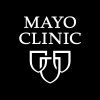
A Study of Paravertebral Block in Thoracic Outlet Syndrome
Thoracic Outlet SyndromeThis research is being done to evaluate the effects of receiving only a paravertebral block prior to first rib resection procedure versus receiving the block both pre and post procedure.

Autoimmune Basis for Postural Tachycardia Syndrome
Postural Orthostatic Tachycardia SyndromePostural Tachycardia Syndrome7 moreThe purpose of this study is to see if some people with postural tachycardia syndrome (POTS) have higher levels of immune proteins (autoantibodies) directed against receptors of the autonomic nervous system, and if these autoantibodies make a difference in their POTS symptoms. The investigators also want to see if the levels of these autoantibodies stay the same over time.

Vagal Nerve Stimulation in Irritable Bowel Syndrome
Irritable Bowel SyndromeThis randomized control trial aims to evaluate the effect of transcutaneous auricular vagal nerve stimulation in patients with irritable bowel syndrome. The intervention will be 8 weeks of treatment with a vagal nerve stimulator. The main objectives are: To evaluate the clinical response, defined as a decrease of at least 50 points on the IBS-SSS questionnaire, of the treatment. To ascertain whether the autonomic-vagal neurosignature, derived from pre-treatment registration of symptom profiles, autonomic responses and imaging of neuronal activity as a reaction to stress is able to predict therapeutic response to tVNS accurately. To evaluate the effect of treatment on quality of life To evaluate the effect of treatment on depression To evaluate the effect of treatment on anxiety Participants will be asked to wear a wearable (Fitbit) and fill out a daily questionnaire for one week. Thereafter, a functional brain MRI will be performed. In the intervention group patients will receive transcutaneous nerve stimulation for 8-weeks at home. The comparison group will receive the same device but with a non-conducting electrode. Patients fill out weekly questionnaires during the treatment period and at follow-up moments 3 and 6 months after finishing the treatment period.

Improving Post COVID-19 Syndrome With Hyperbaric Oxygen Treatments
Post COVID-19 ConditionPost-COVID-19 Syndrome5 moreOver 500 million people have been infected with COVID-19, and to date, more than 6 million people have died. Many individuals who have recovered from COVID-19 continue to experience symptoms even after they have been "cured" of the disease. This condition is known as post COVID-19 Condition, which can have serious health consequences. A common symptom among these individuals is chronic fatigue, characterized by persistent tiredness or lack of energy. This study aims to explore a novel treatment for symptoms of post COVID-19 condition, known as hyperbaric oxygen therapy. This approach has shown promise in helping people with post COVID-19 conditions and treating some other causes of fatigue. Hyperbaric oxygen therapy involves placing patients in a small chamber where they receive high oxygen gas levels. However, this treatment is expensive and time-consuming, and it is unclear if this treatment can be effectively assessed in a large-scale research study. This small study will help us decide if conducting a large research study is feasible. The investigators aim to assess if hyperbaric oxygen therapy can improve symptoms of post COVID-19 condition, such as fatigue.

To Evaluate The Safety and Initial Efficacy of STSA-1002 Injection in Patients With Acute Respiratory...
Acute Respiratory Distress SyndromeTo evaluate the safety and initial efficacy of STSA-1002 injection in patients with acute respiratory distress syndrome.

Early Initiation of Tafolecimab for Patients With Acute Coronary Syndromeundergoing Percutaneous...
Acute Coronary SyndromeNon ST Segment Elevation Acute Coronary SyndromeFor patients with ACS undergoing PCI, intensive lipid-lowering including PCSK9 monoclonal antibody should be started as soon as possible, that is, lower LDL-C level should be achieved as soon as possible. Compared with conventional lipid-lowering regimen, it is expected that the occurrence of major adverse cardiovascular events can still be reduced after drug discontinuation. Therefore, the optimization strategy of "for patients with ACS undergoing PCI, intensive lipid-lowering with PCSK9 monoclonal antibody can be started as soon as possible" is proposed.

Reduced Intensive Idarubicin and Cytarabine Plus Venetoclax as First-line Treatment for Adults With...
Acute Myeloid LeukemiaMyelodysplastic SyndromesReduced intensive 3 + 5 idarubicin and cytarabine chemotherapy plus venetoclax as first-line treatment for adults with acute myeloid leukaemia and high-risk myelodysplastic syndrome

Decremental Esophageal Catheter Filling Volume Titration For Transpulmonary Pressure Measurement...
Pediatric Acute Respiratory Distress Syndrome (PARDS)Acute Respiratory Failure1 moreMechanical ventilation is a critical intervention in the management of pediatric patients with respiratory distress. During this process, accurate measurement of transpulmonary pressure (PL) is essential to ensure the safety and efficacy of ventilation. PL is defined as the difference between alveolar pressure (Palv) and pleural pressure (Ppl). While the direct measurement of Ppl is possible, it poses a risk to tissue integrity. Thus, the primary surrogate for Ppl measurement today is esophageal pressure (Pes). However, the measurement of Pes is not without challenges. This abstract outlines the pitfalls associated with Pes measurement, emphasizing the importance of employing well-defined procedures to mitigate potential errors. These errors can range from underestimation of Pes due to underfilled catheters to overestimation resulting from overfilled catheters. To address these challenges and optimize Pes measurement, various methods have been proposed for titrating the filling volume of the esophageal catheter. In this study, investigators aim to assess a faster decremental filling method and compare it to the traditionally accepted Mojoli method in the context of pediatric patients. This research seeks to enhance the intensivists' understanding of the most efficient and accurate approach to Pes measurement during mechanical ventilation in the pediatric population, ultimately contributing to improved patient care and outcomes

A Multicenter Randomized Clinical Trial (RCT) of Ventilation for Acute Respiratory Distress Syndrome...
Acute Respiratory Distress SyndromeRespiratory FailureThe goal of this interventional study is to compare standard mechanical ventilation to a lung-stress oriented ventilation strategy in patients with Acute Respiratory Distress Syndrome (ARDS). Participants will be ventilated according to one of two different strategies. The main question the study hopes to answer is whether the personalized ventilation strategy helps improve survival.

Gene Sequencing as a Strategy for Identifying Genetic Factors Associated With Serious Adverse Events...
Vaccine-induced Thrombotic Thrombocytopenia SyndromeGuillain-Barre Syndrome2 moreThis protocol proposes to investigate genetic factors that may be involved in the pathogenesis of adverse events of interest with selected covid-19 vaccines: vaccine-induced immune thrombotic thrombocytopenia, and neurological adverse events, such as Guillain-Barré syndrome, acute disseminated encephalomyelitis and transverse myelitis, with the intention of identifying useful biomarkers in identifying people at higher risk, thus reducing the occurrence of these serious adverse events (SAE).
